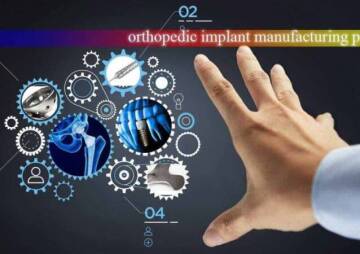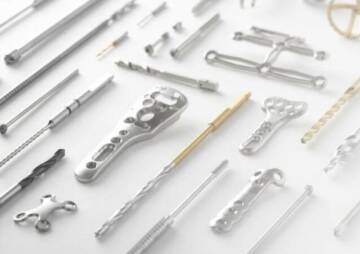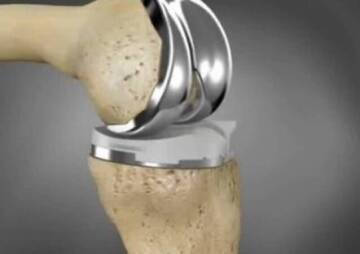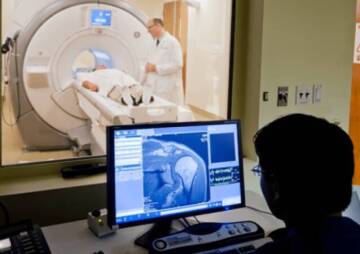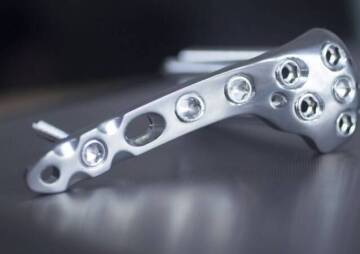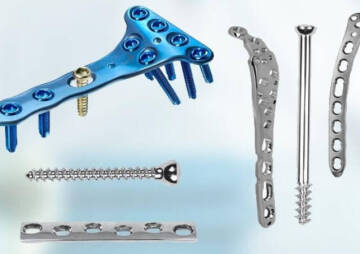-
Category
Craniomaxillofacial Surgery
Orthopedic Surgery
Spine Surgery
Orthopedic Implants
Hip Surgery
Knee Surgery
Pectus Excavatum
Bone Graft
Disinfectants
Healthcare
Crouzon Disease: Do You Know Enough About It?

Crouzon disease is a rare genetic condition that affects the shape of the head and face. Crouzon syndrome is also known as craniofacial dysostosis. In cases with Crouzon syndrome, the eyes are more prominent and widely spaced, and the forehead is typically more rounded. The severity of Crouzon disease could be different in one infant in comparison to another.
Crouzon disease is a rare genetic condition that affects the shape of the head and face. Crouzon syndrome is also known as craniofacial dysostosis. In cases with Crouzon syndrome, the eyes are more prominent and widely spaced, and the forehead is typically more rounded. The severity of Crouzon disease could be different in one infant in comparison to another.
Crouzon disease is a form of syndromic craniosynostosis and it also shares many of the same features with Apert syndrome.
This article is aimed to get you informed about what you need to know about crouzon disease, so stay with Health News Center.
What Is Crouzon Disease?
Crouzon disease is a rare congenital disorder in which most of the seams (sutures) in a baby’s skull fuse too early and in abnormal ways.
Typically, the seams of the skull stay open to let the brain grow. When these seams close too early and the baby’s brain is growing, the skull and face become misshapen.
Crouzon disease includes almost about 5 percent of all babies with craniofacial dysostosis.
Cases with Crouzon syndrome could have a normal life. Most children with this rare condition seem almost unaffected intellectually. However, it can change the shape of the face and head, and in some cases cause hearing and vision problems.
How Is Crouzon Disease Diagnosed?
Crouzon disease is typically diagnosed at birth or during infancy. Doctors diagnose crouzon syndrome through clinical evaluation. They use advanced imaging techniques, such as X-rays, computerized tomography (CT), and scanning or magnetic resonance imaging (MRI).
There are some other less common methods of diagnosis made, such as testing to look for mutations in the FGFR2 gene and looking at the shape of the baby's skull and face through an exam by doctors.
What Are The Symptoms of Crouzon Disease?
There are several symptoms that people with crouzon disease might have. For most cases with crouzon disease, symptoms will vary from one person to another one. There is a list of symptoms that have been diagnosed in most cases with crouzon disease, but individuals with the same disease might not necessarily have all the symptoms listed and also some symptoms can be more severe in some cases than the others.
The followings are the most common symptoms of Crouzon disease:
- abnormal face shape
- wide and short or long and narrow head
- enlarged and high forehead
- wide-set eyes
- bulging eyeballs
- crossed eyes (strabismus)
- eyes that point in two different directions
- vision loss
- a small beak-like nose
- eyelids that slant downward
- flattened and small cheeks
- curved, beak-like nose
- the small, poorly developed upper jaw
- Underdeveloped upper lip
- protruding lower jaw
- hearing loss
- cleft lip or cleft palate
- overcrowded teeth
- mismatched bite
- trouble eating
There is a small percentage of cases with crouzon disease that also have a skin condition which is called acanthosis nigricans. This rare condition may cause thick, dark, and rough patches of skin to form in folds like the armpits, behind the knees, neck, and groin.
How Is Crouzon Disease Treated?
Crouzon disease can affect every child in different ways.
Children with mild Crouzon disease may not need to have any treatments but those with more severe cases should visit craniofacial specialists, doctors who treat abnormalities of the skull and face.
Usually, treatment of Crouzon disease requires a multidisciplinary team which normally includes
craniofacial surgeons, neurosurgeons, ear, nose and throat surgeons, ophthalmologists (eye specialists), audiologists (hearing specialists), dentists and orthodontists, geneticists, psychologists and speech and language therapists.
Treatment of Crouzon disease can include surgery. If surgery is prescribed, the following are some common procedures utilize in the treatment of Crouzon disease:
Skull reshaping to correct the craniosynostosis
The purpose of this surgery is to make sure that there is enough space in the head for the brain to grow normally. In this type of surgery, the craniofacial surgeon and pediatric neurosurgeon work together.
It could also improve the appearance of the child’s head and face and make them look normal. The children will need to wear a special helmet for a couple of months to reshape their skulls.
Frontal-orbital advancement
This surgery is undergone to increase space within the skull and the size of both orbits (the part of the skull which holds the eyeball). As skull reshaping surgery the craniofacial surgeon and the pediatric neurosurgeon would work together through frontal-orbital advancement.
Mid-facial advancement
If breathing difficulties arise, this procedure is performed usually around age five or it might be sooner. The cheeks and lower orbits are advanced. Techniques to encourage bone growth may be utilized.
Facial bi-partition
Through this procedure the upper jaw is getting enlarged, the orbits are derotated, and the upper face is getting narrowed.
Osteotomy
Moving of the upper and lower jaw bone to correct other irregularities in the bite. This is usually performed when cases are in their teens.
Rhinoplasty
Plastic surgery is also an important procedure of this surgery, rhinoplasty is plastic surgery of the nose.
Genioplasty
As it was mentioned above, plastic surgery plays an important role in the procedures of Crouzon disease surgery. Genioplasty is a type of plastic surgery of the cheek or chin.
Stay tuned with Health News Center website to get more detailed information about the treatment options offers to children with craniofacial conditions such as Crouzon disease.
References :healthline, urmc.rochester
